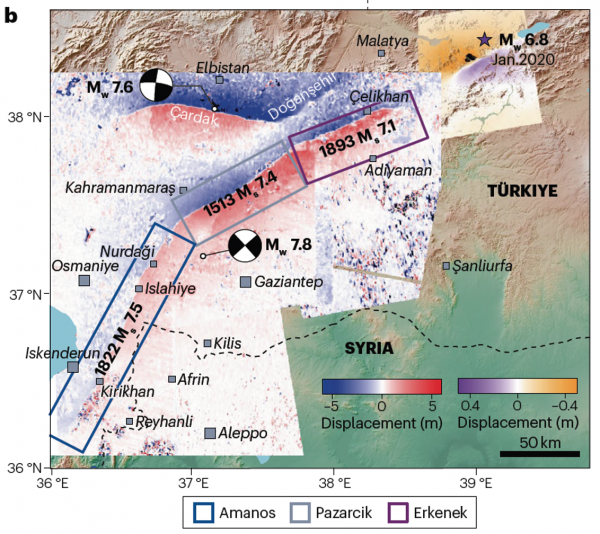Exploring Fault Evolution, Strength and Stresses in the Crust: Insights from Geodetic Imaging of Surface Rupturing Earthquakes
Chris Milliner
California Institute of Technology

- Date & Time
- Location
- Online-only seminar via Microsoft Teams
- Summary
Understanding the mechanics of faulting and accurately assessing seismic hazards are crucial for mitigating the impact of earthquakes. This seminar investigates the use of satellite pixel tracking data to unravel fundamental geomechanical properties of fault systems by providing novel estimates of friction, the absolute magnitude of stresses in the Earth's crust and evolution of inelastic strain as fault systems mature.
Here, I present a methodology based on Mohr-Coulomb failure theory with a quasi-static stress assumption to estimate fault friction parameters using satellite pixel tracking data. Applying this approach to the 2019 Ridgecrest earthquake sequence reveals statically strong and dynamically weakened friction, of 0.61 and 0.29, respectively, which are consistent with experimentally derived lab values. Additionally, I will argue that this approach can estimate the absolute magnitudes of stresses in the crust, shedding light on the driving forces behind earthquakes and their implications for future seismic activity.
In the second part of the seminar, I will present preliminary results of the friction analysis applied to the recent Mw 7.8 and Mw 7.6 Kahramanmaraş earthquakes in Türkiye. It is found that slip release along a specific fault segment deviates from the expected behavior under quasi-static stresses, suggesting an possible effect of strong dynamic stresses associated with rupture propagation.
Lastly, I will present estimates of surface deformation from radar and optical pixel tracking of 17 of the largest (6.0 ≤ Mw ≤ 7.9), historic, continental strike-slip surface ruptures to estimate the amount of inelastic coseismic off-fault strain. These results indicate progressively smaller amounts of off-fault inelastic strain with higher cumulative displacements, faster rupture velocities and geologic slip rates, supporting the notion that faults systems localize as they mature.
Closed captions are typically available a few days after the seminar. To turn them on, press the ‘CC’ button on the video player. For older seminars that don’t have closed captions, please email us, and we will do our best to accommodate your request.
 Jump to Navigation
Jump to Navigation